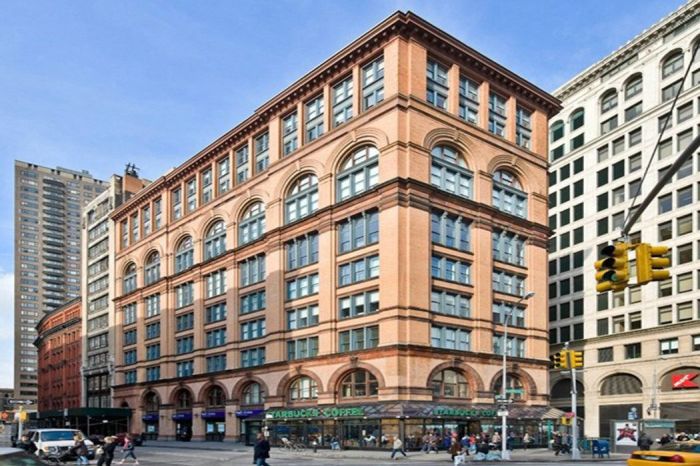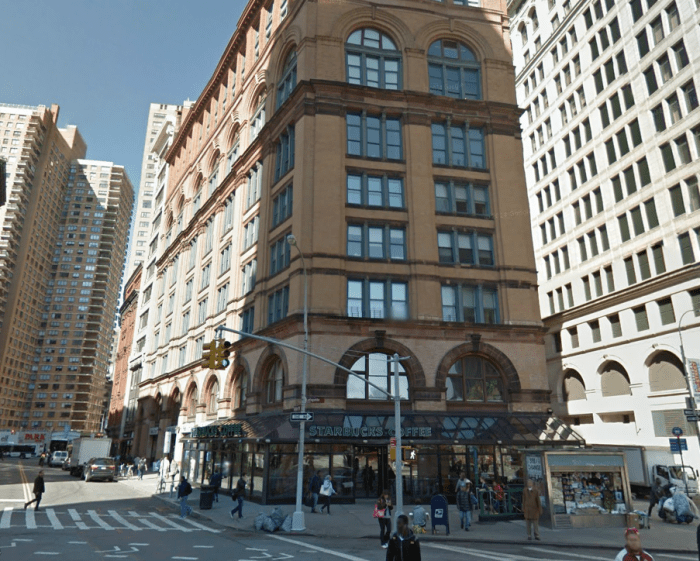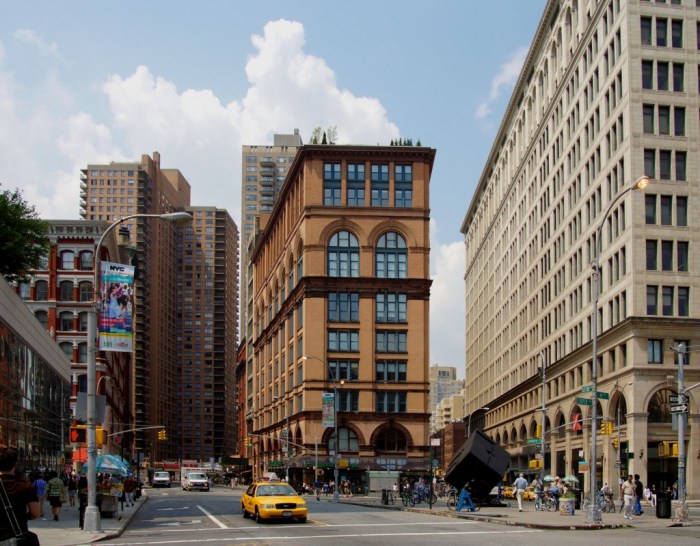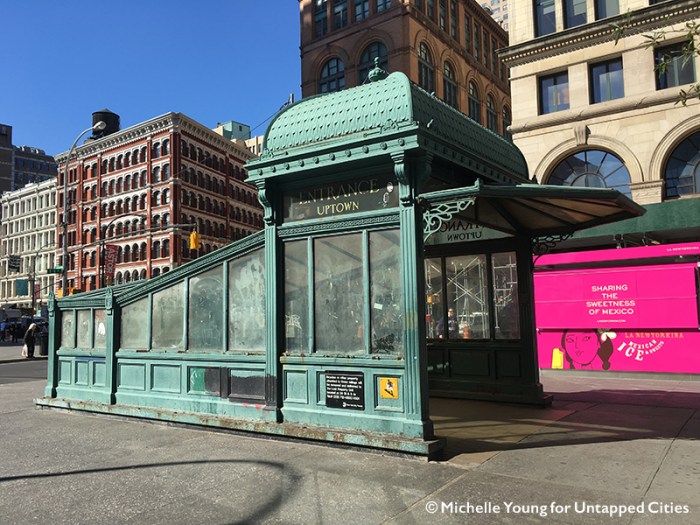Nestled in the East Village of Manhattan, Astor Place is a vibrant neighborhood steeped in history, culture, and architectural charm. Its iconic past and thriving present make it a captivating destination for locals and visitors alike.
From its humble beginnings as a residential area in the 19th century to its transformation into a cultural hub in the 20th century, Astor Place has played a pivotal role in shaping the tapestry of New York City. Its streets have witnessed countless events, from political rallies to artistic movements, leaving an enduring legacy that continues to resonate today.
Historical Significance of Astor Place
Astor Place, located in the East Village neighborhood of Manhattan, holds a rich historical significance in the tapestry of New York City’s development.
Its origins trace back to the early 19th century when John Jacob Astor, a prominent businessman and philanthropist, acquired land in the area. Astor’s vision transformed the area into a fashionable residential district, attracting wealthy families and cultural institutions.
Notable Events
- In 1836, the Astor Place Opera House opened, becoming a renowned venue for opera and theater performances. The theater witnessed the infamous Astor Place Riot in 1849, a violent clash between rival factions of theatergoers.
- In the late 19th century, Astor Place became a hub for the city’s bohemian and artistic community. The neighborhood attracted writers, artists, and intellectuals, including Edgar Allan Poe and Mark Twain.
- In the 20th century, Astor Place underwent significant redevelopment, with the construction of Cooper Union and the Public Theater. These institutions continue to play a vital role in the city’s cultural landscape.
Individuals Associated
- John Jacob Astor: The founder of Astor Place, a prominent businessman and philanthropist.
- Edgar Allan Poe: A renowned writer and poet who lived in the neighborhood.
- Mark Twain: A celebrated author and humorist who resided in Astor Place.
Architectural and Cultural Landmarks

Astor Place is renowned for its diverse architectural styles and significant cultural landmarks. The neighborhood’s buildings showcase a blend of historic and modern designs, contributing to its eclectic character.
Among the notable architectural landmarks is the Astor Place Theatre, a historic playhouse built in 1847. Its ornate facade and elegant interior have hosted countless theatrical productions over the years. The Public Theater, located nearby, is another prominent cultural institution, known for its innovative and experimental performances.
Libraries and Museums
Astor Place is also home to several important libraries and museums. The Astor Place Library, established in 1854, is a branch of the New York Public Library system. It houses a vast collection of books, periodicals, and other materials, making it a valuable resource for scholars and researchers.
The Museum of the Moving Image (MoMI) is another cultural gem in the neighborhood. Dedicated to the art, history, and technology of film and television, MoMI offers a wide range of exhibitions, screenings, and educational programs.
Impact on Neighborhood Identity
These architectural and cultural landmarks have a profound impact on Astor Place’s identity. They contribute to the neighborhood’s vibrant cultural scene and make it a destination for both locals and tourists. The historic buildings, theaters, libraries, and museums serve as a testament to the neighborhood’s rich past and its continued role as a center for arts and culture.
Astor Place is a vibrant neighborhood in New York City known for its eclectic mix of shops, restaurants, and nightlife. It’s also a great place to start your eco-friendly travel journey. From choosing sustainable transportation options to supporting local businesses, there are many eco-friendly travel tips you can follow to minimize your environmental impact.
And after exploring Astor Place, you can continue your sustainable adventure throughout the city.
Neighborhood Character and Demographics

Astor Place exudes a vibrant and eclectic character, drawing a diverse population of residents and visitors alike. The neighborhood is known for its bohemian roots, with a thriving arts and culture scene, independent shops, and charming eateries. The iconic Astor Place Cube, a minimalist sculpture by Tony Rosenthal, serves as a focal point and gathering spot.
The neighborhood’s demographic makeup is a reflection of its diverse character. Astor Place is home to a significant population of young professionals, artists, and students, drawn to the area’s cultural offerings and vibrant nightlife. The neighborhood also has a substantial immigrant population, contributing to its cultural diversity and global atmosphere.
Lifestyle and Amenities
The lifestyle in Astor Place revolves around its vibrant street life and cultural offerings. Residents and visitors alike enjoy leisurely strolls through the tree-lined streets, browsing unique shops, and indulging in the neighborhood’s culinary delights. The area is also known for its lively nightlife, with a range of bars, clubs, and live music venues.
Astor Place offers a wide array of amenities, catering to the diverse needs of its residents. The neighborhood is well-served by public transportation, with multiple subway lines and bus routes connecting it to other parts of Manhattan and beyond. The area is also home to several parks and green spaces, providing opportunities for recreation and relaxation.
Community Aspects
Astor Place fosters a strong sense of community among its residents. The neighborhood is home to several community organizations and initiatives, promoting civic engagement and fostering a sense of belonging. Residents participate in neighborhood events and activities, creating a close-knit and vibrant community.
Economic and Business Environment

Astor Place is a vibrant neighborhood with a diverse economic landscape. It is home to a range of businesses, including retail, hospitality, and real estate.
The retail sector in Astor Place is characterized by a mix of independent boutiques, national chains, and specialty stores. The neighborhood is also home to a number of restaurants, bars, and cafes, which cater to both residents and visitors.
Real Estate
The real estate market in Astor Place is strong, with a mix of historic brownstones, luxury apartments, and commercial properties. The neighborhood is attractive to both investors and homebuyers, due to its central location and proximity to transportation.
Growth Opportunities and Challenges
There are a number of growth opportunities for businesses in Astor Place. The neighborhood’s central location and strong demographics make it an attractive market for new businesses. However, businesses also face a number of challenges, including rising rents and competition from online retailers.
Transportation and Accessibility

Astor Place boasts a convenient transportation network, connecting residents and visitors to various destinations within New York City. The neighborhood is well-served by multiple subway lines, providing quick and easy access to other parts of Manhattan, Brooklyn, and Queens.
The Astor Place subway station, located at the intersection of Astor Place and Lafayette Street, serves the 4, 5, and 6 lines. This station offers direct connections to Grand Central Terminal, Times Square, Brooklyn Bridge, and other key destinations. Additionally, the 2nd Avenue Subway line has a station at Astor Place, providing access to the Upper East Side and Harlem.
Bus Services
Several bus lines operate in the Astor Place area, further enhancing transportation options. The M1, M2, and M3 buses run along 14th Street, providing connections to the East Village, Union Square, and Greenwich Village. The M8 bus travels along Astor Place, offering service to the Upper West Side and Midtown Manhattan.
Accessibility for Pedestrians and Cyclists
Astor Place is also pedestrian-friendly, with wide sidewalks and well-maintained crosswalks. The neighborhood’s proximity to parks and green spaces, such as Tompkins Square Park and Union Square Park, encourages walking and cycling. Astor Place has dedicated bike lanes on some streets, providing safe and convenient options for cyclists.
Potential Improvements
While Astor Place’s transportation network is generally robust, there are potential areas for improvement. Increasing the frequency of bus service during peak hours could reduce wait times and improve reliability. Additionally, expanding the bike lane network in the neighborhood would further encourage cycling and provide a healthier and more sustainable transportation option.
Arts and Culture Scene

Astor Place is renowned for its vibrant arts and culture scene, which has played a pivotal role in shaping its identity. The neighborhood is home to an array of notable theaters, galleries, and performance spaces that showcase a diverse range of artistic expressions.
The arts scene in Astor Place has significantly contributed to the neighborhood’s vibrancy and cultural richness. It has fostered a sense of community among residents and visitors alike, providing a platform for creative expression and cultural exchange.
Theaters and Performance Spaces, Astor place
- The Public Theater: A renowned off-Broadway theater that has produced acclaimed plays, musicals, and educational programs since 1967.
- La MaMa Experimental Theatre Club: A pioneering off-off-Broadway theater that has been a hub for avant-garde and experimental productions since 1961.
- Joe’s Pub: An intimate performance space that hosts a diverse lineup of musical acts, from emerging artists to established performers.
Galleries and Art Spaces
- Cooper Union Galleries: A contemporary art gallery that showcases exhibitions by emerging and established artists.
- The 8th Floor: A gallery and exhibition space dedicated to showcasing emerging and underrepresented artists.
- The Invisible Dog Art Center: A unique art space that hosts exhibitions, performances, and community events.
Green Spaces and Public Amenities

Astor Place is endowed with an array of green spaces and public amenities that contribute to the neighborhood’s livability and community spirit. These spaces provide opportunities for recreation, relaxation, and social interaction, while also promoting environmental sustainability.
Astor Place is a vibrant neighborhood in Manhattan known for its trendy boutiques, eclectic eateries, and lively nightlife. If you’re looking to indulge in some well-deserved luxury, consider exploring the luxury travel deals available online. From exclusive getaways to pampering spa retreats, there’s something for every discerning traveler.
And when you return to Astor Place, you’ll appreciate the neighborhood’s chic atmosphere and convenient access to the city’s best.
At the heart of Astor Place is Astor Place Park, a historic public square that serves as a vibrant gathering spot. The park features lush greenery, a central fountain, and a variety of seating areas, making it an ideal place for picnics, leisurely strolls, and community events.
Community Gardens
The neighborhood is also home to several community gardens, including the Astor Place Community Garden and the Elizabeth Street Garden. These gardens provide residents with opportunities to grow their own food, foster a sense of community, and contribute to local food security.
Libraries and Recreation Centers
Astor Place is well-served by cultural and recreational facilities. The Astor Place Library, located within the historic Astor Place Building, offers a wide range of books, resources, and programs for all ages. The neighborhood also boasts the CHARAS/El Bohio Community Center, which provides a variety of youth programs, arts classes, and community events.
Opportunities for Improvement
While Astor Place offers a wealth of green spaces and public amenities, there are opportunities for improvement and expansion. The neighborhood could benefit from additional green spaces, such as pocket parks or rooftop gardens, to further enhance its livability and environmental sustainability.
Astor Place, known for its vibrant nightlife and eclectic shops, is a must-visit for travelers seeking a lively atmosphere. While planning your trip, consider using a travel budget calculator to estimate expenses. This tool can help you allocate funds wisely, ensuring you have a memorable experience without breaking the bank.
Astor Place offers affordable dining options and budget-friendly accommodation, making it accessible to travelers of all backgrounds.
Additionally, the community could explore partnerships with local organizations to expand programming and activities in existing green spaces, promoting greater community engagement and fostering a sense of place.
Neighborhood Comparisons

Astor Place stands out among other notable neighborhoods in New York City, each possessing unique characteristics and offerings. By comparing Astor Place to these similar neighborhoods, we can better understand its distinct identity and appeal.
In terms of character and demographics, Astor Place shares similarities with neighborhoods like Greenwich Village and the East Village. All three areas exude a vibrant and eclectic atmosphere, attracting a diverse mix of residents, artists, and students. However, Astor Place distinguishes itself with its more upscale and sophisticated ambiance, while still maintaining a sense of bohemian charm.
Greenwich Village
- Shared bohemian and artistic heritage
- Proximity to New York University and Washington Square Park
- Historic brownstone buildings and charming streets
East Village
- Similar eclectic and countercultural vibe
- Abundance of independent shops, restaurants, and music venues
- Younger and more transient population
In terms of amenities, Astor Place offers a blend of cultural attractions, retail options, and green spaces that rivals other sought-after neighborhoods. While it may not have the same level of high-end shopping as SoHo or the extensive art galleries of Chelsea, Astor Place compensates with its own unique offerings.
SoHo
- Upscale shopping destination with luxury boutiques and designer stores
- Historic cast-iron architecture and cobblestone streets
- Limited green spaces and a more commercial atmosphere
Chelsea
- Renowned for its art galleries and contemporary art scene
- High-rise apartment buildings and a more residential feel
- Proximity to the High Line elevated park
Ultimately, Astor Place’s unique combination of upscale living, cultural attractions, and bohemian charm sets it apart from other neighborhoods in New York City. Its distinct character and vibrant community make it a highly desirable and sought-after destination for those seeking an authentic and sophisticated urban experience.
Last Recap
Astor Place stands as a testament to the enduring power of history, culture, and community. Its vibrant streets, architectural landmarks, and thriving arts scene have made it a beloved destination that continues to inspire and captivate.
Question & Answer Hub
What is the historical significance of Astor Place?
Astor Place has played a significant role in New York City’s history, serving as a gathering place for political rallies, labor movements, and artistic expression.
What are some of the notable architectural landmarks in Astor Place?
Astor Place is home to several architectural gems, including the Cooper Union Foundation Building, the Astor Library, and the Public Theater.
What is the arts and culture scene like in Astor Place?
Astor Place is a thriving hub for the arts, with numerous theaters, galleries, and performance spaces, including the La MaMa Experimental Theatre Club and the New York Theatre Workshop.